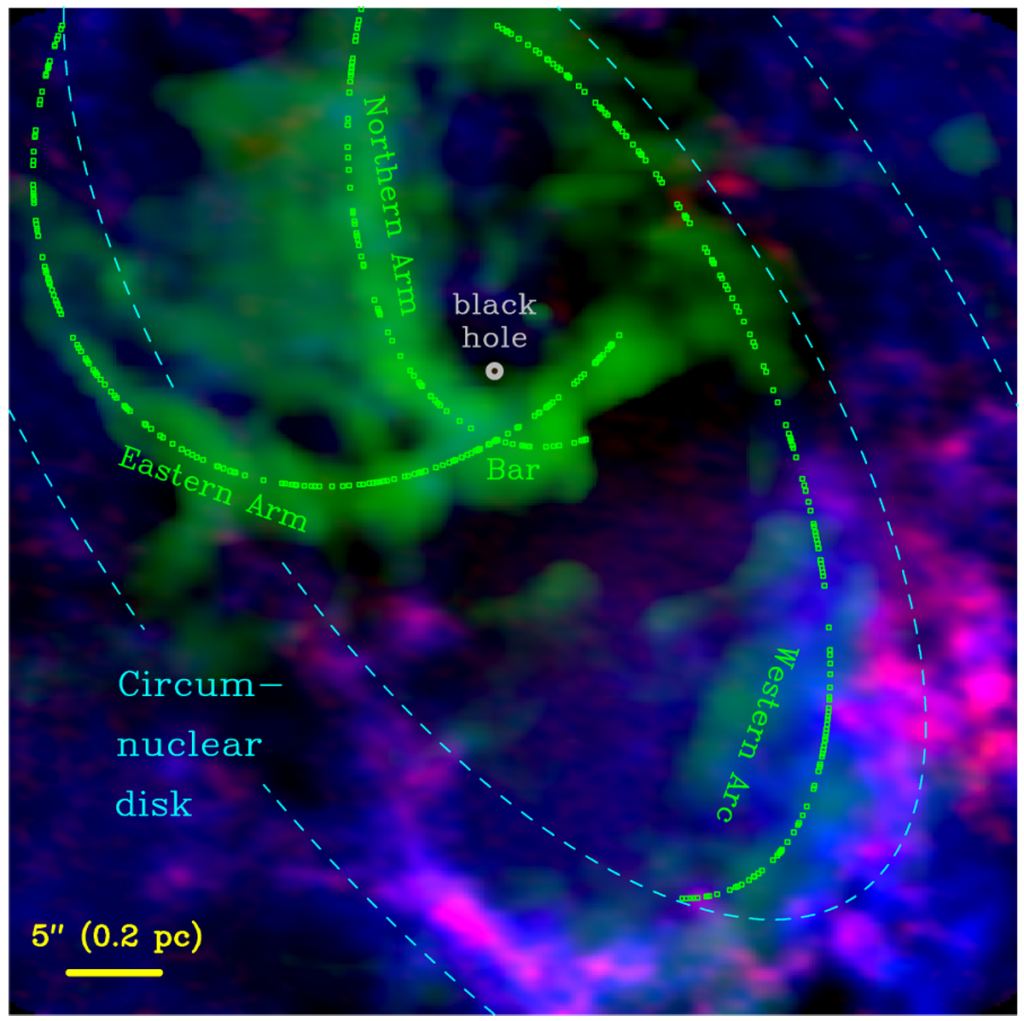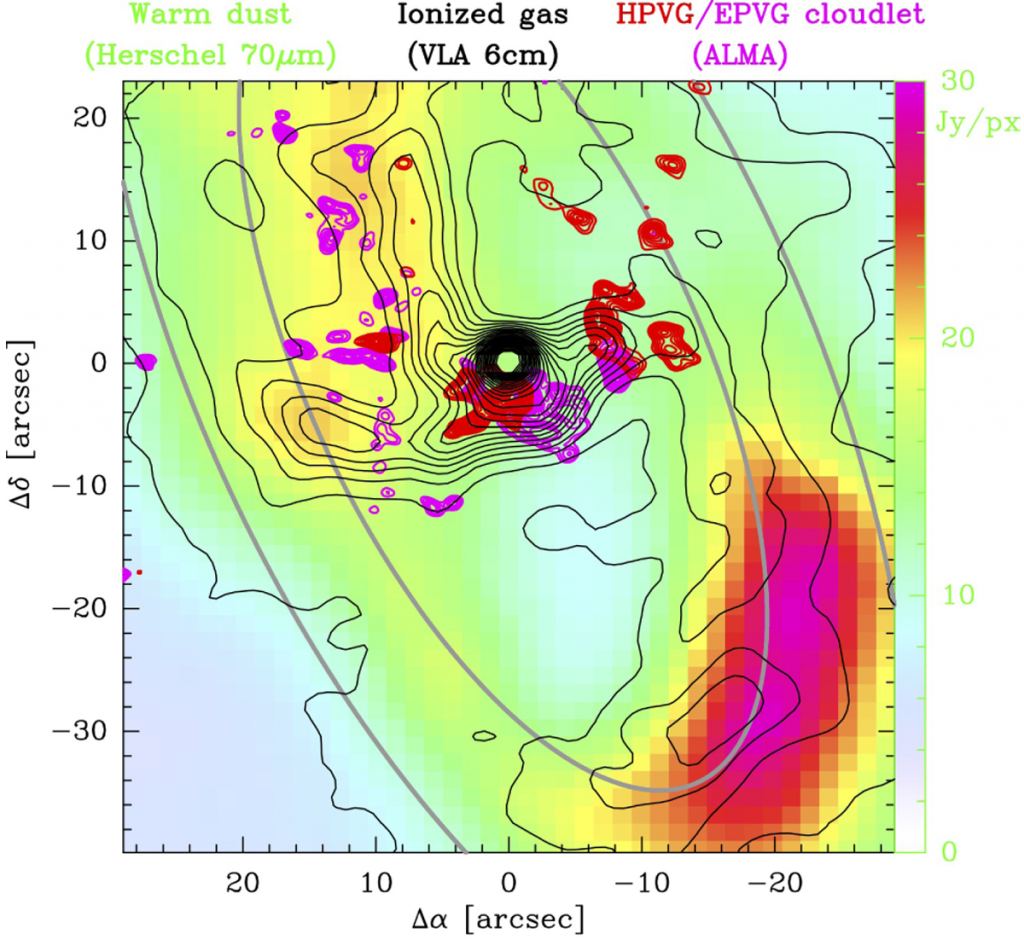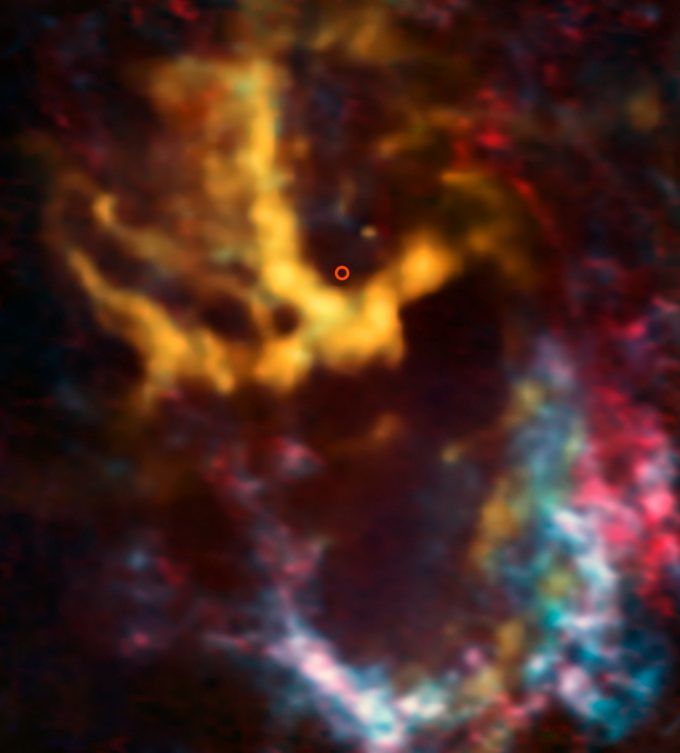At the heart of the Milky Way Galaxy lurks a Supermassive Black Hole (SMBH) named Sagittarius A* (Sag. A-star). Sag. A* is an object of intense study, even though you can’t actually see it. But new images from the Atacama Large Millimetre/sub-millimetre Array (ALMA) reveal swirling high-speed clouds of gas and dust orbiting the black hole, the next best thing to seeing the hole itself.
The clouds of gas and dust are called molecular cloudlets. They’re the type of material that stars form from, but these cloudlets are much too small to form stars. Their mass is only about 60 times greater than our Sun. Plus, they’re in a difficult place for stars to form: the circumnuclear disc (CND).
A CND is a gas disc observed in the central regions of many classes of galaxies that orbits as a ring around a black hole. They’re typically hundreds of parsecs wide, and they constitute a reservoir of gas and dust that black holes feed on. The center of the CND is called the cavity. A new study led by Javier R. Goicoechea of the Instituto de Física Fundamental (Institute of Fundamental Physics) in Madrid, Spain used the power of ALMA to peer into the cavity.
The cavity itself is only about 3.5 light years across. It’s a chaotic place, where the overwhelming power of the black hole’s gravity draws all gas and dust towards it, speeding it up to relativistic speeds as it does so. The central cavity refers to the innermost parsed of the galaxy, hosting the SMBH, the nuclear stellar cluster, and prominent streams of interstellar ionized gas. The inner edge of the CND lies at about 1.5 parsecs from the Sagittarius A-star. Any material orbiting inside the cavity and close to Sag. A* is expected to move at high velocities.

The new study presents a more detailed view of this environment than ever before. Activity inside the central cavity is dominated by vast streams of ionized gas that orbit the cavity and conform to two standard orbit models, spirals vs. ellipses. But these newly-observed cloudlets don’t conform to those orbits. They seem to be doing their own thing. They’re also travelling at different velocities than the streams of ionized gas.

The team thinks that these newly-observed cloudlets are either leftovers of more massive molecular clouds that fall into the cavity and are tidally disrupted, or that they originate from instabilities in the inner rim of the CND that lead to fragmentation and in-fall from there. Either way, they are now an understood part of the chaotic environment inside the inner cavity.
According to the paper, these newly-observed cloudlets don’t last long. That’s not surprising considering their proximity to the black hole and all that goes on near it. They’re subject to photoevaporation by the intense stellar radiation field, blown away by winds from massive stars in the central cluster, or disrupted by strong gravitational shears.
The team behind the paper isn’t certain of the exact origin of the cloudlets. If they’re not clumps of gas torn from larger clouds of gas by the intense gravity of the black hole, they might be clumps torn from the inner rim of the CND. In any case, we now know they’re there, and there presence tells us something about forces at play near black holes.
We’re just not exactly certain what that is, yet.
Sources:
- ALMA Observatory Press Release: “Cloudlets Swarm Around our Local Supermassive Black Hole“
- Research Paper: High-speed molecular cloudlets around the Galactic center’s supermassive black hole“
- Research Paper: “The life cycle of starbursting circumnuclear gas discs“

